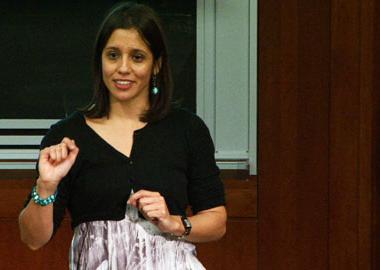 Researchers who wish to study mobility patterns might be reaching for your phone. Increasingly, cell phones are equipped with locational receivers (Global Positioning Systems or GPS) and their bread crumb trails are opening up entirely new ways to study and predict the dynamics of travel. “We are in the GPS revolution because most PCS of tomorrow will be in our hands in the (form of) the smart phone”, according to Marta González. San Francisco is a city on the forefront of this revolution: there, willing cell phone users have voluntarily uploaded their GPS trajectories.
Researchers who wish to study mobility patterns might be reaching for your phone. Increasingly, cell phones are equipped with locational receivers (Global Positioning Systems or GPS) and their bread crumb trails are opening up entirely new ways to study and predict the dynamics of travel. “We are in the GPS revolution because most PCS of tomorrow will be in our hands in the (form of) the smart phone”, according to Marta González. San Francisco is a city on the forefront of this revolution: there, willing cell phone users have voluntarily uploaded their GPS trajectories. If that is the data of the future, it is still possible to study mobility patterns today, by conducting a secondary analysis of cell phone records. González cites an example from Europe, where she worked with cell phone billing data for 7 million customers. She examined a subset of 16 million records, which represented 100,000 users. Although individual locations could not be identified, Dr. González used a proxy variable, the cell phone tower from which a call originated or was received. Using a combination of parsing and data mining, the data was scaled
from anonymous, individual call to identify aggregate mobility. The analysis shows that there are very powerful and stable underlying patterns. Travel did not follow a random walk; there was great regularity in the functions- - and in this dataset, just two locations, per person, could account for 65% of their movement, within an average area of 16 by 16 kilometers. This research uses a statistical “spatial language” to describe and model human movement. These measures include a “Levy flight” and a “ radius of gyration”- a quantitative measure of the average distance a person visits from a defined center-point. The radius of gyration can be used to predict, “what is the probability that a person will be in an expected place.”
González expects that GPS data will play a vital role in future transportation research, and will be used to model the number of trips, and average trip-lengths. The data will also be applied to widespread and popular gravity based transportation models. This locational research, while new to transportation, is extensively used in physics and biology- for example, to model the diffusion and spread of epidemics and infectious diseases. For transportation researchers, these distributions could be used to develop entirely new analytical calculations that can capture lots of information, like the likely diffusion of travelers within a known network, or the regularities of trips taken with smart cards....Read the full article/Watch Video
González expects that GPS data will play a vital role in future transportation research, and will be used to model the number of trips, and average trip-lengths. The data will also be applied to widespread and popular gravity based transportation models. This locational research, while new to transportation, is extensively used in physics and biology- for example, to model the diffusion and spread of epidemics and infectious diseases. For transportation researchers, these distributions could be used to develop entirely new analytical calculations that can capture lots of information, like the likely diffusion of travelers within a known network, or the regularities of trips taken with smart cards....Read the full article/Watch Video
For more techical information visit our sister website www.engineeringmaintenance.info or for equipment procurement please visit www.engineeringtrader.com

